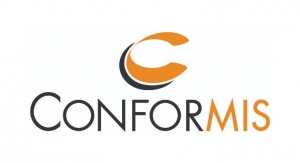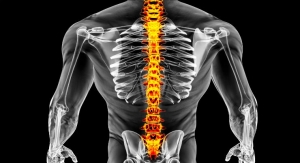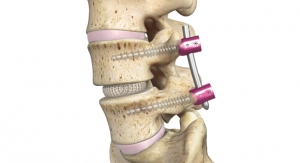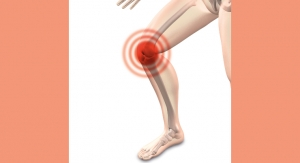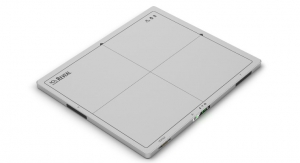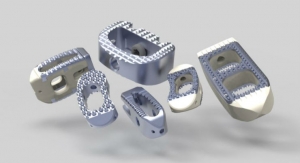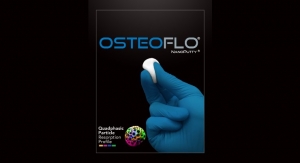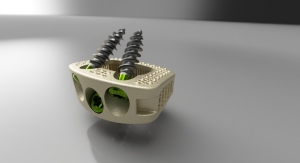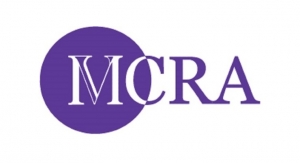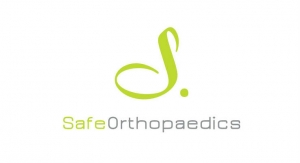Scott Gottlieb, M.D., Commissioner, U.S. Food and Drug Administration02.25.19
Advances in technology and material science are enabling new opportunities to transform health and mobility through innovations in medical products. The FDA is committed to adopting pathways that allow patients efficient access to these safe and effective products.
As part of these efforts, I’m announcing a significant step to promote the development of a new generation of implantable devices that can be more fully integrated with the patient’s own brain.
Known as brain-computer interface (BCI) devices, they hold the potential for direct control of, for example, a limb prosthesis by the patient’s thought processes. This can allow significantly greater mobility and independence for patients. These devices have the potential to benefit people with severe disabilities by increasing their ability to interact with their environment. This is a critical area of development for the millions of people who suffer from conditions that inhibit their mobility. We’re issuing draft guidance to help spur development of BCI devices for patients with paralysis or amputation, including our nation’s veterans.
This achievement is the result of our broader work to help ensure our regulatory framework is properly matched to the unique attributes of the new technologies we’re being asked to review. We’re committed to providing the right tools and fostering an environment that lets the developers of novel technologies advance innovative ideas while prioritizing patient safety and delivering on our public health mission.
The draft guidance is considered a “leap-frog” guidance because it helps bridge where we are with innovations of tomorrow, providing our initial thoughts about regulatory considerations for an emerging health technology with the understanding that our recommendations are likely to evolve as the FDA works to finalize the guidance to account for public comments, technological developments, and new information. Our success in improving safety and driving innovation depends, in part, on our ability to quickly identify the potential for future technological breakthroughs that can alter the paradigm for how we approach certain medical challenges and advance these goals.
Among other steps, the agency has committed to searching the landscape for these future innovations with the development of the Emerging Sciences Working Group, a team of 15 FDA experts representing various specialties and FDA Centers. The group is charged with leveraging scientific expertise and resources to conduct long-range horizon scanning and advising agency and FDA Center leadership on how emerging issues and cross-cutting scientific advances may affect the FDA’s preparedness and activities across government agencies, including asking for public input on advances that aren’t even on most people’s radars.
The FDA is also committed to collaborating with stakeholders, including product developers, across the health care ecosystem on specific areas that we know are advancing and ripe for disruption. Often, we pull together stakeholders to discuss promising areas for development. For example, we recently held an event to discuss the development of Orthopaedic SMART Devices. The workshop was intended to enhance engagement with stakeholders to facilitate device development and to discuss scientific and regulatory challenges associated with Orthopaedic SMART Devices. Public input and feedback gained through this workshop may aid in the efficient development of innovative, safe and effective Orthopaedic SMART Devices for better patient care. The workshop has resulted in a common understanding of the current stage of development for this promising technology and the possibilities for advancing patient care.
There are many ways we identify these areas. Once we do, we work to ensure that the tools are in place to advance the development of these new technologies, by providing clarity and direction to medical device developers to help reduce the barriers of bringing new treatments to patients. We know innovation is often capital intensive and risky and we understand that we can help reduce the risk and cost of capital to advance these patient opportunities by giving clear direction early in the development process. At the same time, there are many examples of how novel technology is being harnessed to help patients live better lives.
To take some recent examples where technology is transforming medical care, we have realized significant strides toward diabetes management with the advent of the automated insulin delivery systems to treat and manage type 1 diabetes; certain patients immobilized by various injuries and conditions are able to gain access to motorized exoskeletons to help them walk; and we’ve seen technology improve the way we diagnose and treat diseases and conditions with novel software. We’ve also seen meaningful advances in neurology and the FDA has helped advance research into biomarkers to detect early signs of traumatic brain injury and the development of patient-centric assessment methods for upper limb prostheses.
The FDA has also been active in encouraging the development of the BCI devices that are the subject of the draft guidance. Our Center for Devices and Radiological Health held a public workshop to foster discussion of the scientific and clinical considerations associated with the development of BCI devices, defined for the purposes of the workshop as neuroprostheses that interface with the central or peripheral nervous system to restore lost motor or sensory capabilities. In other words, devices implanted into the brain that communicate with a patient’s nerves and muscles to help them gain mobility or a sense of touch. One of the outcomes of the workshop was the initiation and generation of the draft guidance being issued. The FDA will consider public comment as it finalizes the draft guidance. The ultimate aim being to help potential developers of these novel devices address this area of unmet medical need and promote innovation while maintaining appropriate patient protections.
Our work on BCI devices also reflects our deep commitment to help the men and women who bravely served our country and were injured, and may suffer from conditions that limit their mobility. Our duty to serve our veterans includes actively pursuing medical advances that protect and treat them during their service and support them in recovering from injuries. We believe that BCI technology has the potential to improve wounded veterans’ lives and those of other Americans in regaining mobility and thus improving their quality of life.
The idea that a prosthetic could interact with the brain has been the topic of much imagination, but now we’re actually on the verge of realizing this opportunity. The FDA has an important role to play by laying out a path for developers on how to seize this prospect and advance the development of new devices.
Our draft guidance on implanted BCI devices provides our proposed recommendations for developers on what non-clinical testing and clinical study design could be used to develop BCI devices for patients with paralysis or amputation. This includes detailed technical advice and recommendations for study designs to support safety and effectiveness of these novel devices. The draft guidance proposes that non-clinical device testing can be used to demonstrate that potential risks have been mitigated prior to initiating a clinical study. Proper design of clinical trials is essential to provide reasonable assurance of safety and effectiveness to support a regulatory submission to the FDA.
This is the fourth leap-frog guidance we’ve issued for public comment and we have seen firsthand the impact they can have on realizing the potential of innovative technologies. For example, the agency previously issued a draft guidance, Technical Considerations for Additive Manufactured Medical Devices, to help further innovation around evolving 3D printing technology and to encourage and support innovation in that field. Since then, we have seen advances in 3D printing including, for example, the clearance of a system to print diagnostic use anatomic models at the point of care. Examples such as this demonstrate the impact that these types of leap-frog draft guidances can have in facilitating the development of medical devices that employ rapidly emerging technology, helping to expedite access to novel products, which may ultimately have a deep and lasting impact on patients’ lives. These types of draft guidances aim to help facilitate the development of medical devices that employ rapidly emerging technology by providing for public comment on the FDA’s proposed thinking, helping to expedite access to such products, which may ultimately have a profound impact on patients’ lives.
The FDA encourages stakeholders to provide feedback on this new draft guidance to ensure that all viewpoints can be considered as the FDA finalizes the guidance to improve and facilitate development of these novel devices. We will also continue working to identify other areas of significant promise and support them with additional leap-frog guidance documents. Working together with researchers, developers, patients, and providers, our aim is to advance policies that encourage more novel therapies that can dramatically alter the trajectory of health and mobility.
As part of these efforts, I’m announcing a significant step to promote the development of a new generation of implantable devices that can be more fully integrated with the patient’s own brain.
Known as brain-computer interface (BCI) devices, they hold the potential for direct control of, for example, a limb prosthesis by the patient’s thought processes. This can allow significantly greater mobility and independence for patients. These devices have the potential to benefit people with severe disabilities by increasing their ability to interact with their environment. This is a critical area of development for the millions of people who suffer from conditions that inhibit their mobility. We’re issuing draft guidance to help spur development of BCI devices for patients with paralysis or amputation, including our nation’s veterans.
This achievement is the result of our broader work to help ensure our regulatory framework is properly matched to the unique attributes of the new technologies we’re being asked to review. We’re committed to providing the right tools and fostering an environment that lets the developers of novel technologies advance innovative ideas while prioritizing patient safety and delivering on our public health mission.
The draft guidance is considered a “leap-frog” guidance because it helps bridge where we are with innovations of tomorrow, providing our initial thoughts about regulatory considerations for an emerging health technology with the understanding that our recommendations are likely to evolve as the FDA works to finalize the guidance to account for public comments, technological developments, and new information. Our success in improving safety and driving innovation depends, in part, on our ability to quickly identify the potential for future technological breakthroughs that can alter the paradigm for how we approach certain medical challenges and advance these goals.
Among other steps, the agency has committed to searching the landscape for these future innovations with the development of the Emerging Sciences Working Group, a team of 15 FDA experts representing various specialties and FDA Centers. The group is charged with leveraging scientific expertise and resources to conduct long-range horizon scanning and advising agency and FDA Center leadership on how emerging issues and cross-cutting scientific advances may affect the FDA’s preparedness and activities across government agencies, including asking for public input on advances that aren’t even on most people’s radars.
The FDA is also committed to collaborating with stakeholders, including product developers, across the health care ecosystem on specific areas that we know are advancing and ripe for disruption. Often, we pull together stakeholders to discuss promising areas for development. For example, we recently held an event to discuss the development of Orthopaedic SMART Devices. The workshop was intended to enhance engagement with stakeholders to facilitate device development and to discuss scientific and regulatory challenges associated with Orthopaedic SMART Devices. Public input and feedback gained through this workshop may aid in the efficient development of innovative, safe and effective Orthopaedic SMART Devices for better patient care. The workshop has resulted in a common understanding of the current stage of development for this promising technology and the possibilities for advancing patient care.
There are many ways we identify these areas. Once we do, we work to ensure that the tools are in place to advance the development of these new technologies, by providing clarity and direction to medical device developers to help reduce the barriers of bringing new treatments to patients. We know innovation is often capital intensive and risky and we understand that we can help reduce the risk and cost of capital to advance these patient opportunities by giving clear direction early in the development process. At the same time, there are many examples of how novel technology is being harnessed to help patients live better lives.
To take some recent examples where technology is transforming medical care, we have realized significant strides toward diabetes management with the advent of the automated insulin delivery systems to treat and manage type 1 diabetes; certain patients immobilized by various injuries and conditions are able to gain access to motorized exoskeletons to help them walk; and we’ve seen technology improve the way we diagnose and treat diseases and conditions with novel software. We’ve also seen meaningful advances in neurology and the FDA has helped advance research into biomarkers to detect early signs of traumatic brain injury and the development of patient-centric assessment methods for upper limb prostheses.
The FDA has also been active in encouraging the development of the BCI devices that are the subject of the draft guidance. Our Center for Devices and Radiological Health held a public workshop to foster discussion of the scientific and clinical considerations associated with the development of BCI devices, defined for the purposes of the workshop as neuroprostheses that interface with the central or peripheral nervous system to restore lost motor or sensory capabilities. In other words, devices implanted into the brain that communicate with a patient’s nerves and muscles to help them gain mobility or a sense of touch. One of the outcomes of the workshop was the initiation and generation of the draft guidance being issued. The FDA will consider public comment as it finalizes the draft guidance. The ultimate aim being to help potential developers of these novel devices address this area of unmet medical need and promote innovation while maintaining appropriate patient protections.
Our work on BCI devices also reflects our deep commitment to help the men and women who bravely served our country and were injured, and may suffer from conditions that limit their mobility. Our duty to serve our veterans includes actively pursuing medical advances that protect and treat them during their service and support them in recovering from injuries. We believe that BCI technology has the potential to improve wounded veterans’ lives and those of other Americans in regaining mobility and thus improving their quality of life.
The idea that a prosthetic could interact with the brain has been the topic of much imagination, but now we’re actually on the verge of realizing this opportunity. The FDA has an important role to play by laying out a path for developers on how to seize this prospect and advance the development of new devices.
Our draft guidance on implanted BCI devices provides our proposed recommendations for developers on what non-clinical testing and clinical study design could be used to develop BCI devices for patients with paralysis or amputation. This includes detailed technical advice and recommendations for study designs to support safety and effectiveness of these novel devices. The draft guidance proposes that non-clinical device testing can be used to demonstrate that potential risks have been mitigated prior to initiating a clinical study. Proper design of clinical trials is essential to provide reasonable assurance of safety and effectiveness to support a regulatory submission to the FDA.
This is the fourth leap-frog guidance we’ve issued for public comment and we have seen firsthand the impact they can have on realizing the potential of innovative technologies. For example, the agency previously issued a draft guidance, Technical Considerations for Additive Manufactured Medical Devices, to help further innovation around evolving 3D printing technology and to encourage and support innovation in that field. Since then, we have seen advances in 3D printing including, for example, the clearance of a system to print diagnostic use anatomic models at the point of care. Examples such as this demonstrate the impact that these types of leap-frog draft guidances can have in facilitating the development of medical devices that employ rapidly emerging technology, helping to expedite access to novel products, which may ultimately have a deep and lasting impact on patients’ lives. These types of draft guidances aim to help facilitate the development of medical devices that employ rapidly emerging technology by providing for public comment on the FDA’s proposed thinking, helping to expedite access to such products, which may ultimately have a profound impact on patients’ lives.
The FDA encourages stakeholders to provide feedback on this new draft guidance to ensure that all viewpoints can be considered as the FDA finalizes the guidance to improve and facilitate development of these novel devices. We will also continue working to identify other areas of significant promise and support them with additional leap-frog guidance documents. Working together with researchers, developers, patients, and providers, our aim is to advance policies that encourage more novel therapies that can dramatically alter the trajectory of health and mobility.




